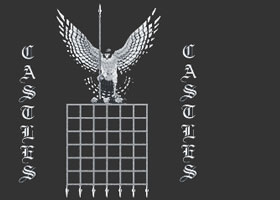Medieval WomenThe Role of a Young Medieval Women
A young Medieval Woman from a wealthy Noble Family would be sent away to complete her education. As young as seven girls would be sent away from their home to live with another noble family. She would be taught a range of subjects and skills. Manners and etiquette were of prime importance, including how to curtsey. Music, dancing , riding and archery were also taught. These young girls were expected to act as servants to the Ladies of the castle - their duties would be to look after clothes and the assist ladies with dressing and coiffure. Some housewifely duties such as preserving fruits and household management would be taught. High ranking young women would take on the role of ladies-in-waiting and were sometimes taught French. During this period a young Medieval woman would also learn about the Medieval Code of Chivalry and Courtly Love. The romance of Courtly love was completely opposite to the practicalities of Medieval marriage. The Age of Consent - With parental permission it was legal for boys to marry at 14 and girls at 12 A betrothal often took place when the prospective bride and groom were as young as 7 years old. But a marriage was only legal once the marriage had been consummated. Medieval Women and Marriage
Just as today a wedding for women during the Middle Ages was one of the most important days of their life. The major difference to Medieval wedding customs to a modern day Western marriage is that the woman had very little, if any, choice in who her husband might be. Marriages were frequently arranged so that both families involved would benefit. Marriages would be arranged to bring prestige or wealth to the family. Marriage for the love of women was a rare occurrence. Medieval women were expected to bring a dowry to the marriage. A dowry was an amount of money, goods, and property that the bride would bring to the marriage. The law gave a husband full rights over his wife. She effectively became his property. A wealthy Medieval marriage was celebrated by nine days of feasting and jousting. Married Women
After marriage women during the Middle Ages were expected to run the households and provide children. Large families were the norm as the mortality rate for children and babies was so high. Many Medieval woman made arrangement for the care of their children in case they themselves died during childbirth. The life expectancy of a Medieval woman was just forty years. Most Medieval woman would become pregnant between 4 and 8 times. A Medieval woman would expect to lose at least one child Medieval Women - Appearance
The appearance of a noble Medieval woman was important. For details of her clothing please click the following link - Medieval Womans Clothing Medieval women aged quickly during this era. Constant child bearing and pregnancies took its tole on a woman's body. The medieval diet lacked Vitamin C resulting in bad teeth and bleeding gums. Medieval women might even dyed their hair yellow with a mixture of saffron, cumin seed, celandine and oil! Face make-up was applied by women to acquire a pale look. A pale complexion was so desirable that women were bled to achieve the desired look. Face paint made from plant roots and leaves was also applied. Medieval Women
The life of the Women during the Middle Ages was certainly not easy - arranged, loveless marriages, subservient to men, short life expectancy and constant child bearing! | 
